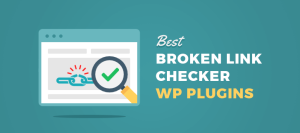Solid Cloud Hosting for your Websites
We offer a huge range of domain name extensions. Register your domain name today and you’ll be up and running straight away.
Starting from $13.50
Fastdot offers solid cPanel Hosting for small businesses, designers and enterprise with the highest level of stability and performance.
From $9.95/month
Having a professional email address that aligns with your domain shows your commitment to your business’s professionalism.
From only $2.95/month
Check if your domain name is still available!
- One-Click Installer
- Disk Space: 5GB
- Bandwidth: 50GB
- Databases: 1
- Main Domain: 1
- Email Accounts: 5
- Local Australian Support
- Unlimited Email Forwarding
- Free SSL Certificate
- WordPress Autoupdates
- Automatic Backups
- Enhanced Security
- Ecommerce Enabled
- LiteSpeed Web Server
- One-Click Installer
- Disk Space: 15GB
- Bandwidth: 100GB
- Databases: 2
- Main Domain: 1
- Addon Domain: 1
- Email Accounts: 10
- Local Australian Support
- Unlimited Email Forwarding
- Free SSL Certificate
- WordPress Autoupdates
- Automatic Backups
- Enhanced Security
- Ecommerce Enabled
- LiteSpeed Web Server
- WP-CLI and SSH
- One-Click Installer
- Disk Space: 30GB
- Bandwidth: 250GB
- Databases: 3
- Main Domain: 1
- Addon Domain: 2
- Email Accounts: 25
- Local Australian Support
- Unlimited Email Forwarding
- Free SSL Certificate
- WordPress Autoupdates
- Automatic Backups
- Enhanced Security
- Ecommerce Enabled
- LiteSpeed Web Server
- WP-CLI and SSH
Fastdot offers solid Web Hosting for businesses, web designers and enterprise with the highest level of stability and performance.
- HTTP/2 and PHP 8.x Support: Faster data processing and improved response times.
- LiteSpeed Web Server: A high-performance server that efficiently handles high traffic loads.
- Install your Favorite CMS (WordPress, Joomla, Drupal)

We offer a huge range of domain name extensions to choose from. So register your domain name today and you’ll be up and running straight away.
- Huge Amount of Extensions to Choose From
- Instant Domain Name Registration
- Easy Domain Name Transfers

Our Enterprise Cloud Servers are designed for mission critical hosting and maximum redundancy. Get everything you need from our Cloud Server farm.
- High Availability for Maximum Redundancy
- Easy management of your Cloud Server
- Dedicated Resources for Bare Metal Performance


Whether you’re concerned about protecting privacy or safeguarding confidential business data, selecting the right email solution is crucial.
Free Website Transfer
We provide free transfer and migration services for our cPanel Hosting, so you do not need to worry about anything. Simply sign up and we will do the rest!

Affiliate Program
The best part? You know your clients all require web hosting for their site, so it’s a super easy sell.





